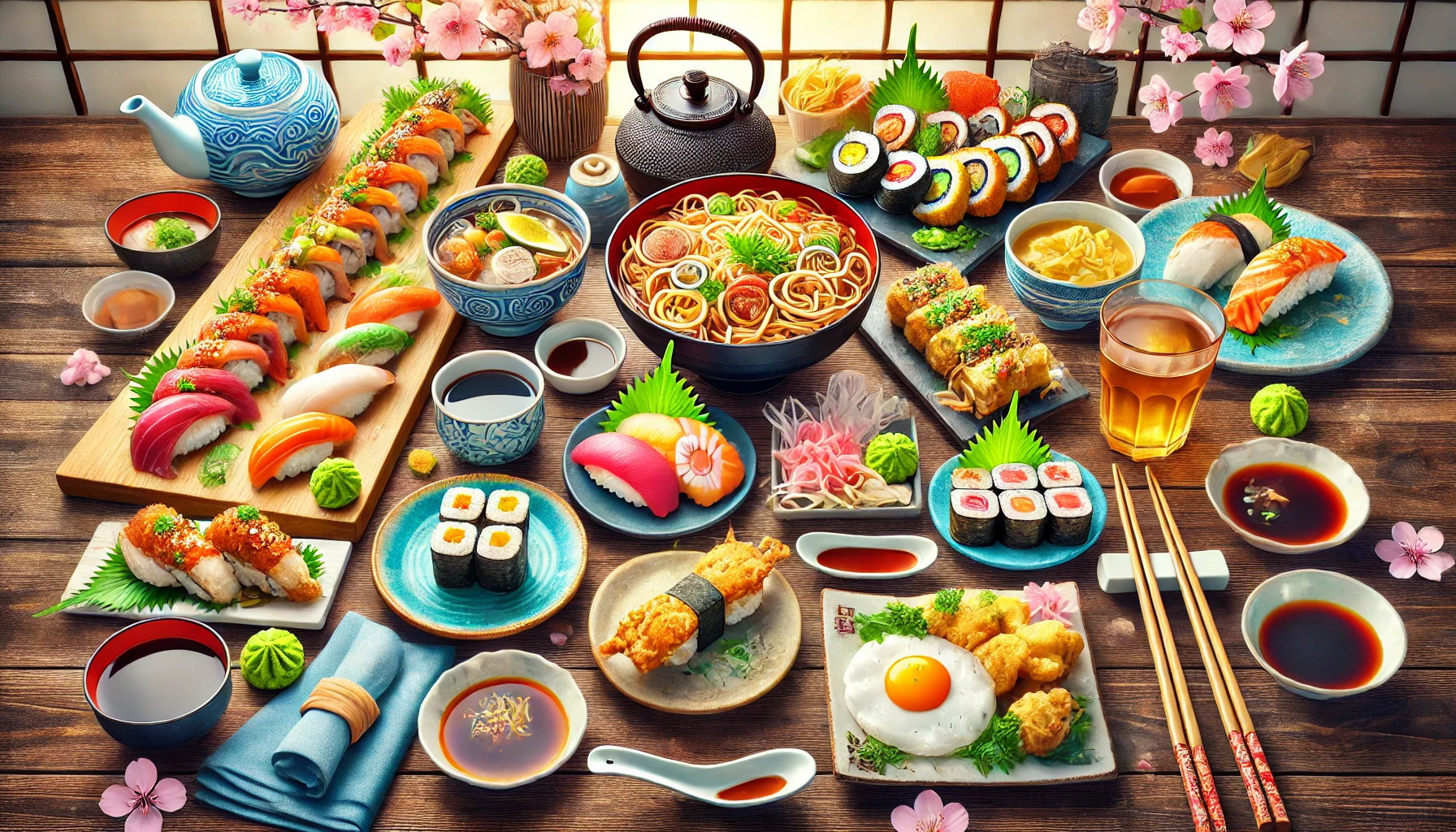Japan is renowned for its rich culinary heritage, which combines tradition, seasonal ingredients, and meticulous preparation. For anyone new to Japanese cuisine, it can seem both fascinating and a bit overwhelming. Let’s take a flavorful journey through some of the major types of Japanese food, making it easy and enjoyable for you to understand and appreciate these delightful dishes.
Sushi: The Art of Simplicity
Sushi is perhaps the most internationally recognized Japanese dish. It consists of vinegared rice paired with various toppings, most commonly raw fish. There are several types of sushi, including:
- Nigiri: A hand-pressed mound of rice topped with a slice of fish or seafood.

- Maki: Rolled sushi, where fish and vegetables are encased in rice and seaweed.

- Sashimi: Sliced raw fish served without rice.

Ramen: A Bowl of Comfort
Ramen, a hearty noodle soup, has won hearts worldwide. Each bowl typically includes wheat noodles, a rich broth (often chicken, pork, miso, or soy-based), and various toppings like sliced pork, green onions, and a boiled egg. Regional varieties offer unique flavors, such as Hakata’s rich, creamy tonkotsu ramen or Sapporo’s miso ramen. Following 3 are the major types of Ramen.
Tonkotsu Ramen (Ichiran is among the top popular brands)

Miso Ramen

Shouyu Ramen

| Type of Ramen | Broth Base | Flavor Profile | Key Ingredients | Regional Specialty |
|---|---|---|---|---|
| Tonkotsu | Pork bones | Rich, creamy, and hearty | Pork bones, garlic, ginger, soy sauce | Fukuoka (Hakata) |
| Miso | Fermented soybean paste | Savory, slightly sweet, and hearty | Miso paste, chicken or pork broth, garlic, ginger | Hokkaido (Sapporo) |
| Shoyu | Soy sauce | Light, salty, and savory | Soy sauce, chicken or pork broth, garlic, ginger | Tokyo |
Tempura: Crispy Perfection
Tempura involves lightly battering and deep-frying seafood and vegetables to achieve a light, crispy texture. It’s often served with a dipping sauce or atop a bowl of rice (tendon) or noodles (tempura soba/udon). The secret lies in the batter and the oil’s temperature, ensuring a delicate, non-greasy finish.

Okonomiyaki: Japanese Savory Pancakes
Okonomiyaki, often referred to as Japanese pizza or pancake, is a savory dish made with flour, eggs, shredded cabbage, and a variety of other ingredients like meat, seafood, and cheese. It’s cooked on a griddle and typically topped with mayonnaise, okonomiyaki sauce, and bonito flakes.

Yakitori: Grilled Skewers
Yakitori consists of bite-sized pieces of chicken (or other meats) grilled on skewers. It’s a popular street food and bar snack, often enjoyed with a cold beer. The skewers can be seasoned with salt (shio) or a sweet soy sauce-based tare.

Soba and Udon: The Noodle Duo
Soba (buckwheat noodles) and Udon (thick wheat noodles) are staple dishes often served either hot in a broth or cold with a dipping sauce. They are versatile and can be enjoyed in various forms, like tempura soba or udon with a curry-flavored broth.


Matcha: The Green Tea Experience
No introduction to Japanese cuisine would be complete without mentioning matcha, finely ground green tea leaves. Matcha is enjoyed in traditional tea ceremonies and as a flavoring in sweets, ice cream, and even savory dishes.

Final Thoughts
Japanese cuisine offers a harmonious blend of flavors, textures, and presentation. Whether you’re enjoying the elegance of sushi, the comfort of ramen, or the crispy goodness of tempura, each dish reflects Japan’s culinary artistry and cultural heritage. Dive in and savor the delicious world of Japanese food!
For more delightful explorations of Japanese culture and cuisine, visit kendekingdom. Let’s embark on this gastronomic adventure together!
